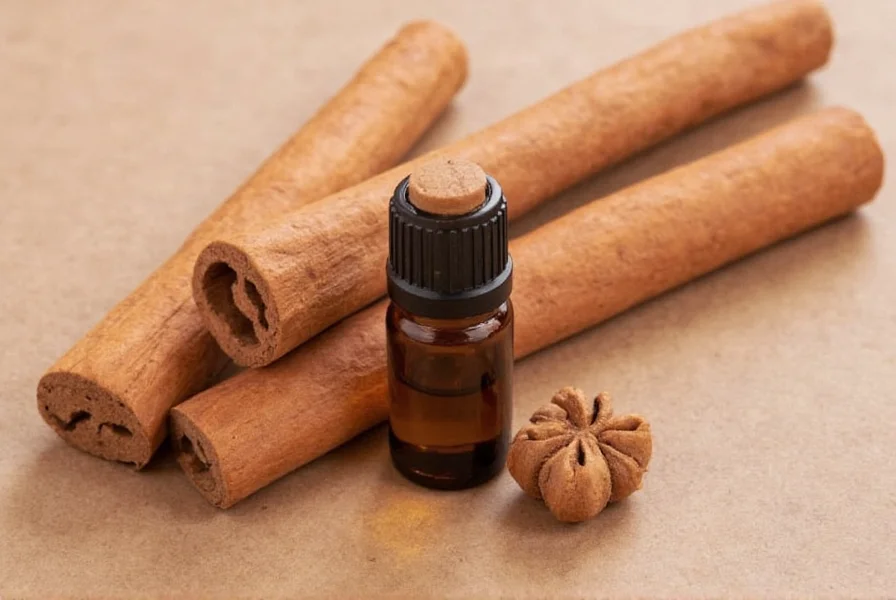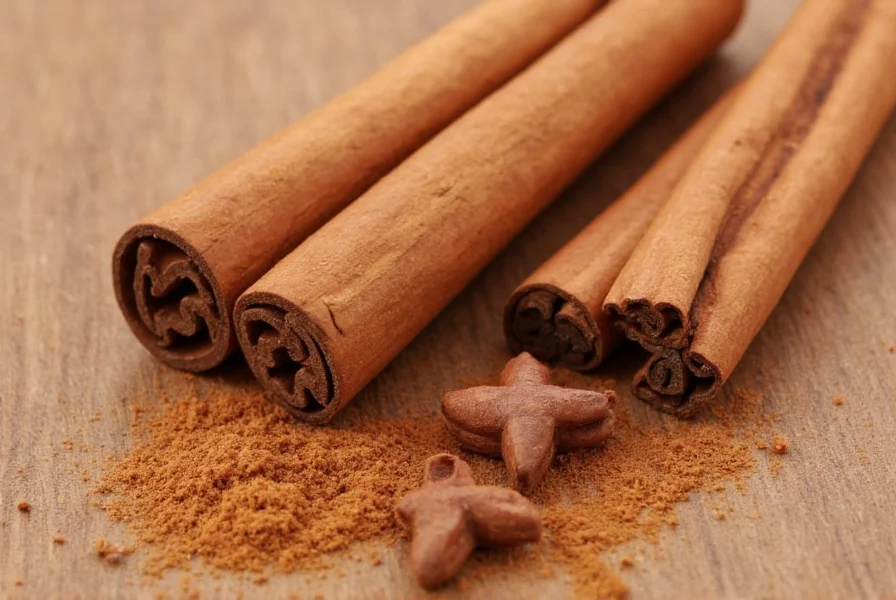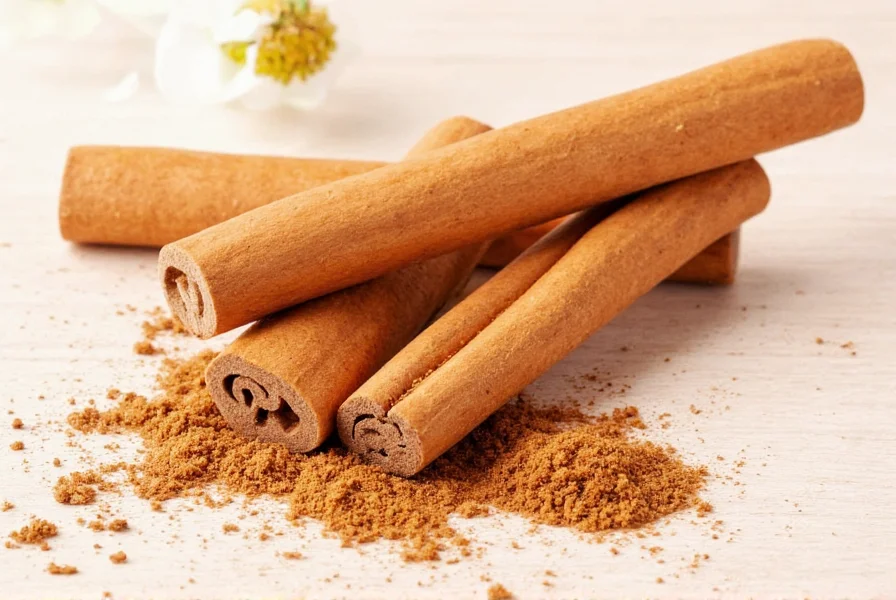Derived from Cinnamomum verum (true cinnamon) or Cinnamomum cassia bark through steam distillation, cinnamon essential oil contains powerful bioactive compounds like cinnamaldehyde, eugenol, and linalool. These components contribute to its therapeutic properties while requiring careful usage due to its high potency. Unlike culinary cinnamon, the concentrated essential oil demands proper dilution and safety precautions to prevent adverse reactions.
Scientifically Validated Benefits of Cinnamon Essential Oil
Multiple peer-reviewed studies have examined cinnamon essential oil's biological activities. Research published in the Journal of Agricultural and Food Chemistry confirms its significant antimicrobial effects against foodborne pathogens including E. coli and Salmonella. The oil's primary component, cinnamaldehyde, disrupts bacterial cell membranes, making it effective against various gram-positive and gram-negative bacteria.
A 2020 review in Phytotherapy Research analyzed cinnamon oil's antioxidant capacity, demonstrating its ability to neutralize free radicals and reduce oxidative stress markers in laboratory studies. This antioxidant activity may contribute to cellular protection, though human clinical trials remain limited.
| Benefit Category | Scientific Evidence Level | Key Research Findings |
|---|---|---|
| Antimicrobial Activity | Strong laboratory evidence | Effective against 29 bacterial strains and multiple fungal species at 1-2% dilution |
| Blood Sugar Regulation | Preliminary human studies | May improve insulin sensitivity; requires medical supervision for diabetes management |
| Anti-inflammatory Effects | Moderate laboratory evidence | Reduces inflammatory markers in cell studies; human evidence limited |
| Insect Repellent | Established efficacy | Effective against mosquitoes and stored-product pests at 5-10% concentration |
Distinguishing Evidence-Based Benefits from Traditional Claims
While traditional medicine systems have used cinnamon for centuries, modern research provides more nuanced understanding of cinnamon essential oil benefits. Many popular claims about cinnamon essential oil for weight loss or cinnamon oil curing diabetes lack robust clinical evidence. Scientific literature supports modest effects on glucose metabolism, but these shouldn't replace conventional diabetes treatments.
The distinction between Cinnamomum verum (true cinnamon) and Cinnamomum cassia matters significantly. Cassia cinnamon oil contains higher coumarin levels (up to 5%), which can cause liver toxicity in sensitive individuals or with prolonged use. True cinnamon (Ceylon) contains minimal coumarin, making it safer for regular use when properly diluted.
Safe Usage Guidelines for Cinnamon Essential Oil
Proper dilution represents the most critical safety consideration for using cinnamon essential oil safely. The recommended maximum concentration for topical application ranges from 0.5% to 2%, depending on individual sensitivity. For a standard 10mL carrier oil blend:
- General use: 1-2 drops per teaspoon of carrier oil (0.5-1% dilution)
- Targeted applications: Up to 3-4 drops per teaspoon (1.5-2% dilution)
- Always perform a patch test 24 hours before broader application
Never apply undiluted cinnamon essential oil directly to skin. The high concentration of cinnamaldehyde can cause chemical burns, severe irritation, or allergic contact dermatitis. Individuals with sensitive skin, pregnant women, and children under 6 should avoid cinnamon oil entirely. Those taking blood thinners or diabetes medications must consult healthcare providers before use due to potential interactions.

Practical Applications with Scientific Support
Research-backed applications of cinnamon essential oil include:
Natural Surface Disinfectant
A 2018 study in Food Microbiology demonstrated cinnamon oil's effectiveness as a natural disinfectant. Combine 10-15 drops with 1 cup of water and ¼ cup white vinegar in a spray bottle for kitchen surface cleaning. This natural cinnamon oil cleaning solution shows efficacy against common household bacteria without harsh chemical residues.
Respiratory Support Blend
When diffused at appropriate concentrations (1-2 drops per 100 square feet), cinnamon oil may support respiratory health during cold season. Combine with 2 drops of eucalyptus oil in a diffuser for potential cinnamon essential oil for congestion relief. Note that direct inhalation of undiluted oil can irritate mucous membranes.
Oral Health Applications
Research in the Journal of Contemporary Dental Practice indicates cinnamon oil's antibacterial properties may support oral health. Add 1 drop to 1 tablespoon of carrier oil for oil pulling, swishing for 10-15 minutes before spitting out. Never swallow essential oils, and consult your dentist before incorporating into oral care routines.

Quality Considerations When Selecting Cinnamon Essential Oil
Not all cinnamon essential oils deliver equal therapeutic value. Look for these quality indicators when choosing products for maximizing cinnamon oil benefits:
- Botanical name specification: True cinnamon (Cinnamomum verum) vs. cassia (Cinnamomum cassia)
- GC/MS testing reports: Verifies chemical composition and purity
- Extraction method: Steam distillation preferred over solvent extraction
- Storage conditions: Dark glass bottles, stored in cool, dark places
Avoid products labeled simply as "cinnamon oil" without specifying the botanical source. Cassia-based oils contain higher coumarin levels, which may pose health risks with regular use. Reputable suppliers provide batch-specific testing documentation showing cinnamaldehyde content (typically 60-80% for quality oils) and minimal contaminants.
Conclusion: Balancing Benefits and Safety
Cinnamon essential oil offers valuable therapeutic properties supported by scientific research, particularly for antimicrobial applications and antioxidant support. Understanding the distinction between evidence-based benefits and exaggerated claims remains crucial for safe usage. Always prioritize proper dilution, recognize individual sensitivities, and consult healthcare professionals when considering cinnamon oil for specific health concerns. When used appropriately, this potent essential oil can be a valuable addition to natural wellness practices with minimal risk.
Frequently Asked Questions
Can cinnamon essential oil lower blood sugar levels?
Some preliminary studies suggest cinnamon oil may improve insulin sensitivity and support healthy glucose metabolism. However, it should never replace prescribed diabetes medications. Individuals with diabetes must consult their healthcare provider before using cinnamon oil, as it may interact with blood sugar medications and require dosage adjustments.
What's the safest way to use cinnamon essential oil on skin?
Always dilute cinnamon essential oil to 0.5-2% concentration in a carrier oil before skin application. Perform a patch test by applying a diluted drop to your inner forearm and waiting 24 hours to check for reactions. Never apply undiluted oil directly to skin, as it can cause chemical burns or severe irritation due to its high cinnamaldehyde content.
How does true cinnamon essential oil differ from cassia cinnamon oil?
True cinnamon (Cinnamomum verum) essential oil contains lower coumarin levels (typically under 0.04%) compared to cassia cinnamon oil (up to 5% coumarin). Coumarin can cause liver toxicity in sensitive individuals with prolonged use. True cinnamon oil generally has a more delicate, complex aroma with higher eugenol content, while cassia oil has a stronger, sharper scent with higher cinnamaldehyde concentration.
Can I ingest cinnamon essential oil for health benefits?
Internal use of cinnamon essential oil requires extreme caution and should only occur under supervision of a qualified healthcare professional. The concentrated nature of essential oils makes them potentially toxic when ingested. Even small amounts can cause mucous membrane irritation, liver toxicity (particularly with cassia varieties), or interact with medications. Culinary cinnamon powder offers a safer alternative for dietary inclusion.
How long does properly stored cinnamon essential oil remain effective?
When stored in dark glass bottles away from heat and light, cinnamon essential oil maintains therapeutic properties for 1-2 years. The high cinnamaldehyde content makes it relatively stable compared to citrus oils, but oxidation still occurs over time. Check for changes in aroma or viscosity - a weakened scent or thicker consistency indicates degradation. Always keep the bottle tightly sealed when not in use to preserve potency.











 浙公网安备
33010002000092号
浙公网安备
33010002000092号 浙B2-20120091-4
浙B2-20120091-4